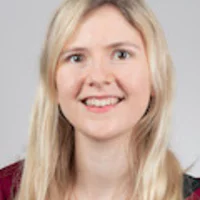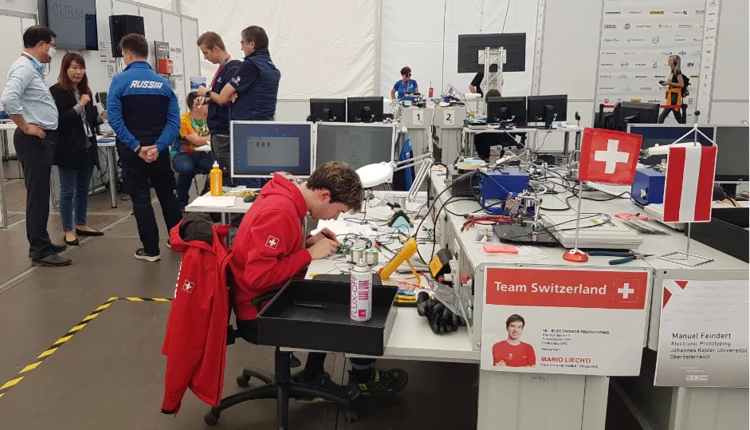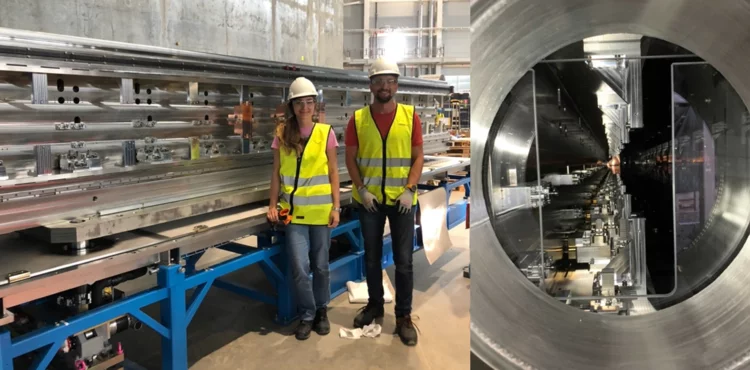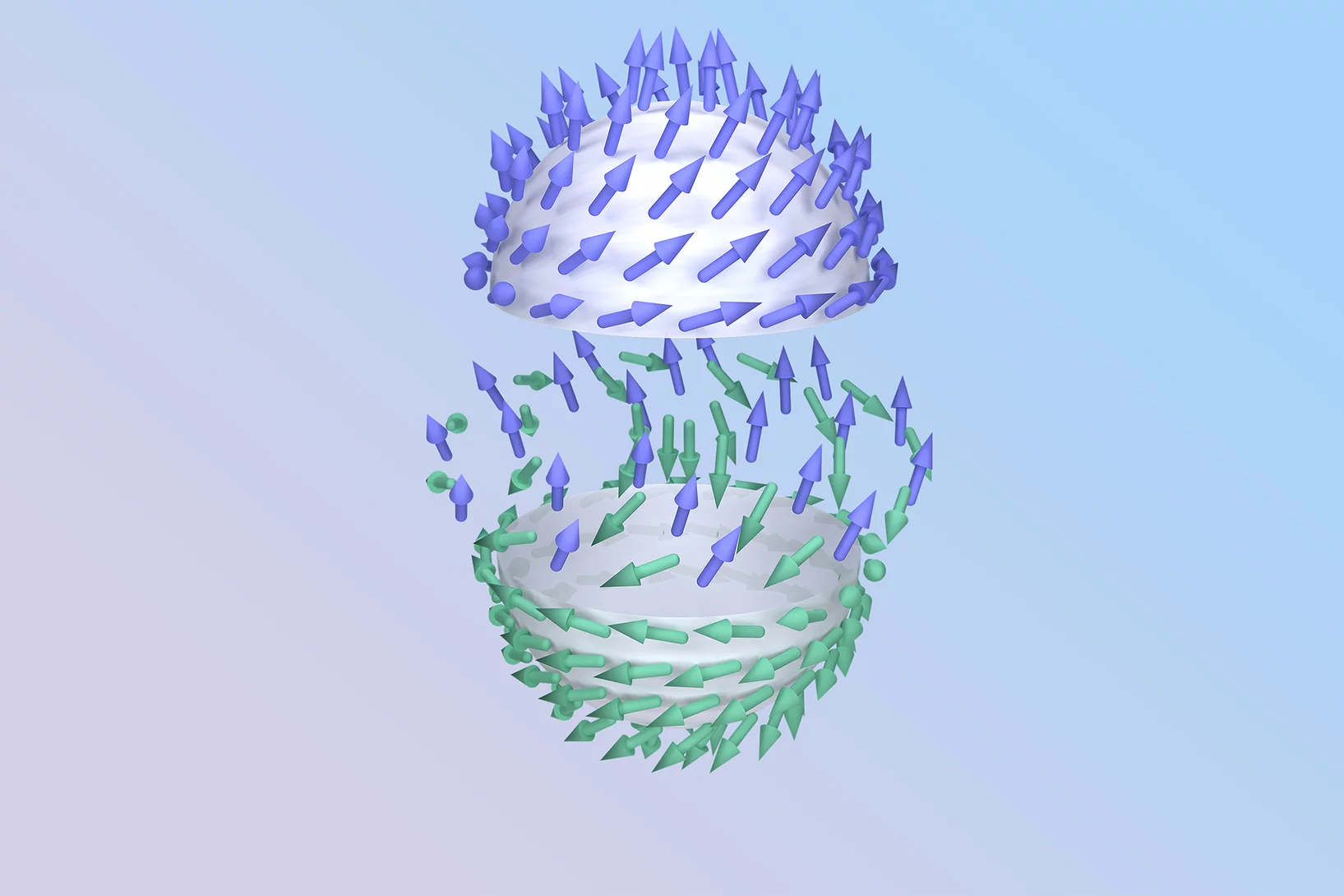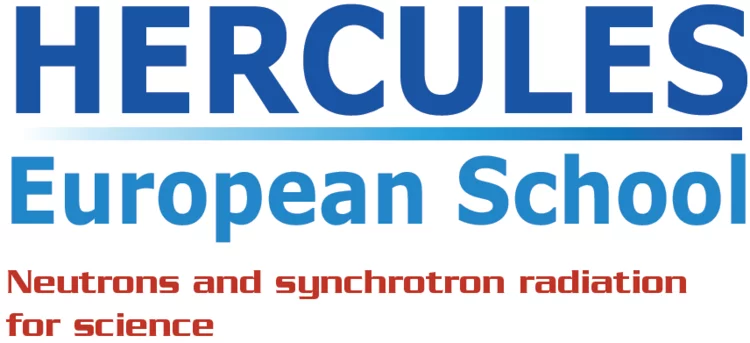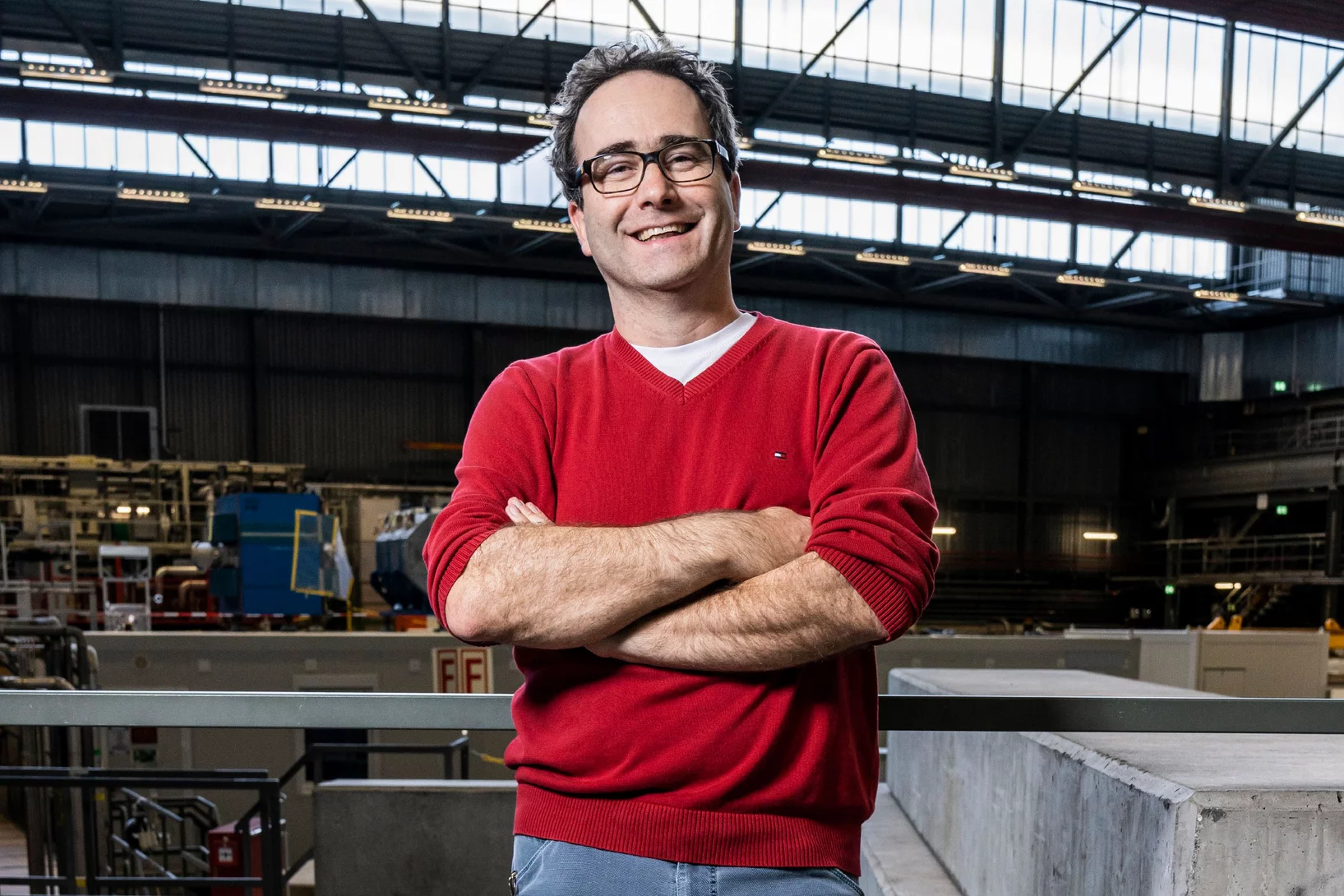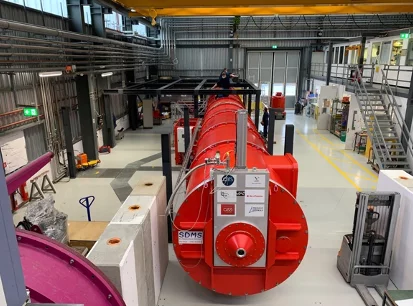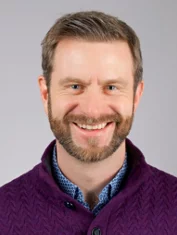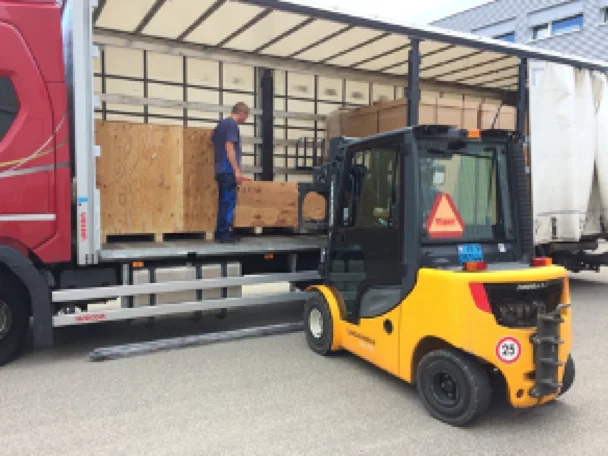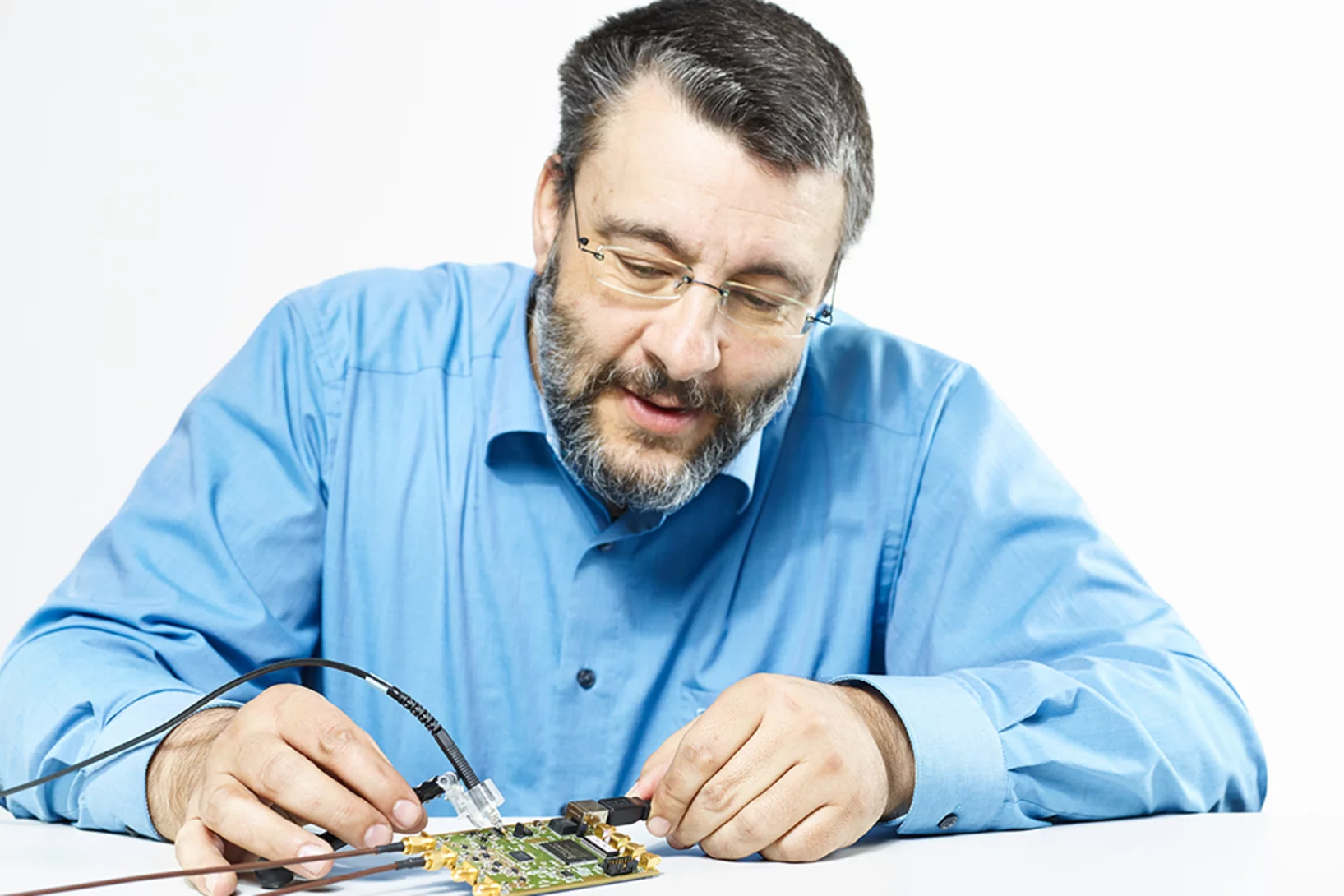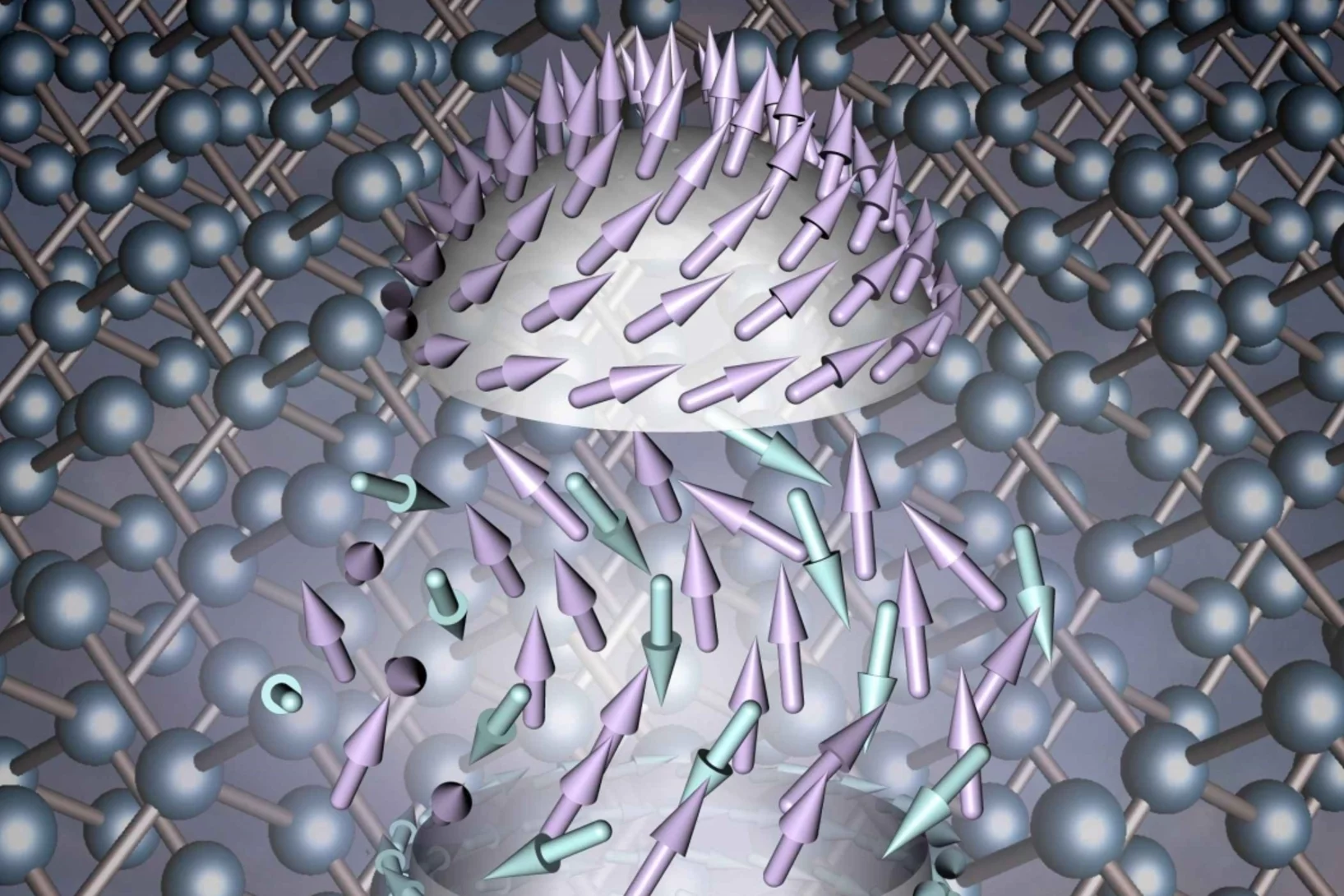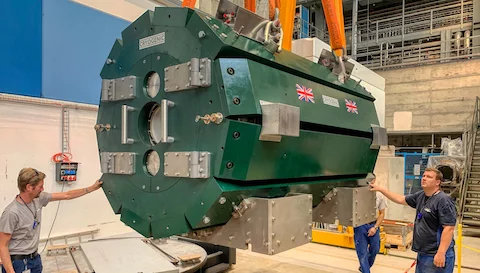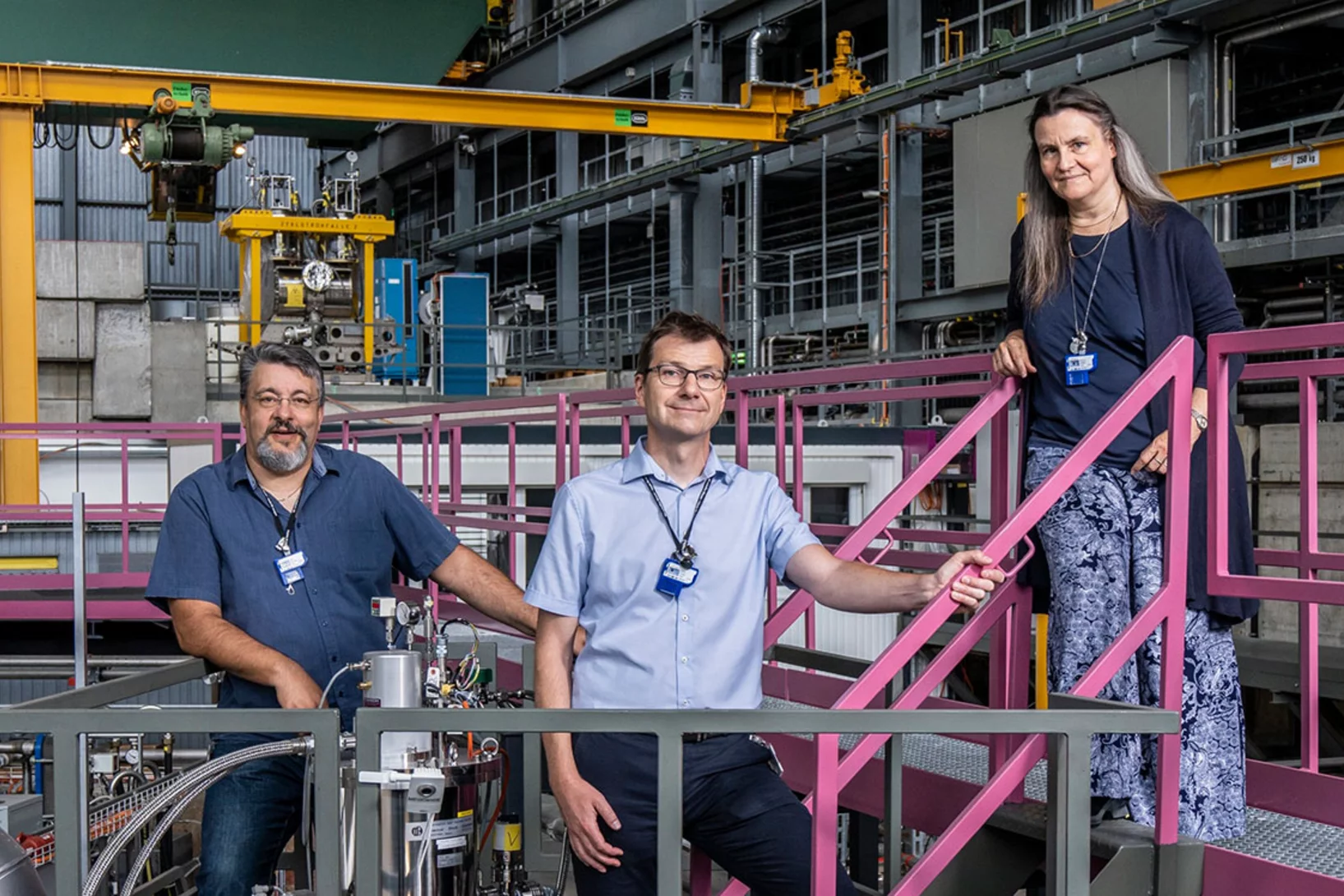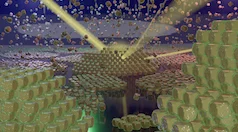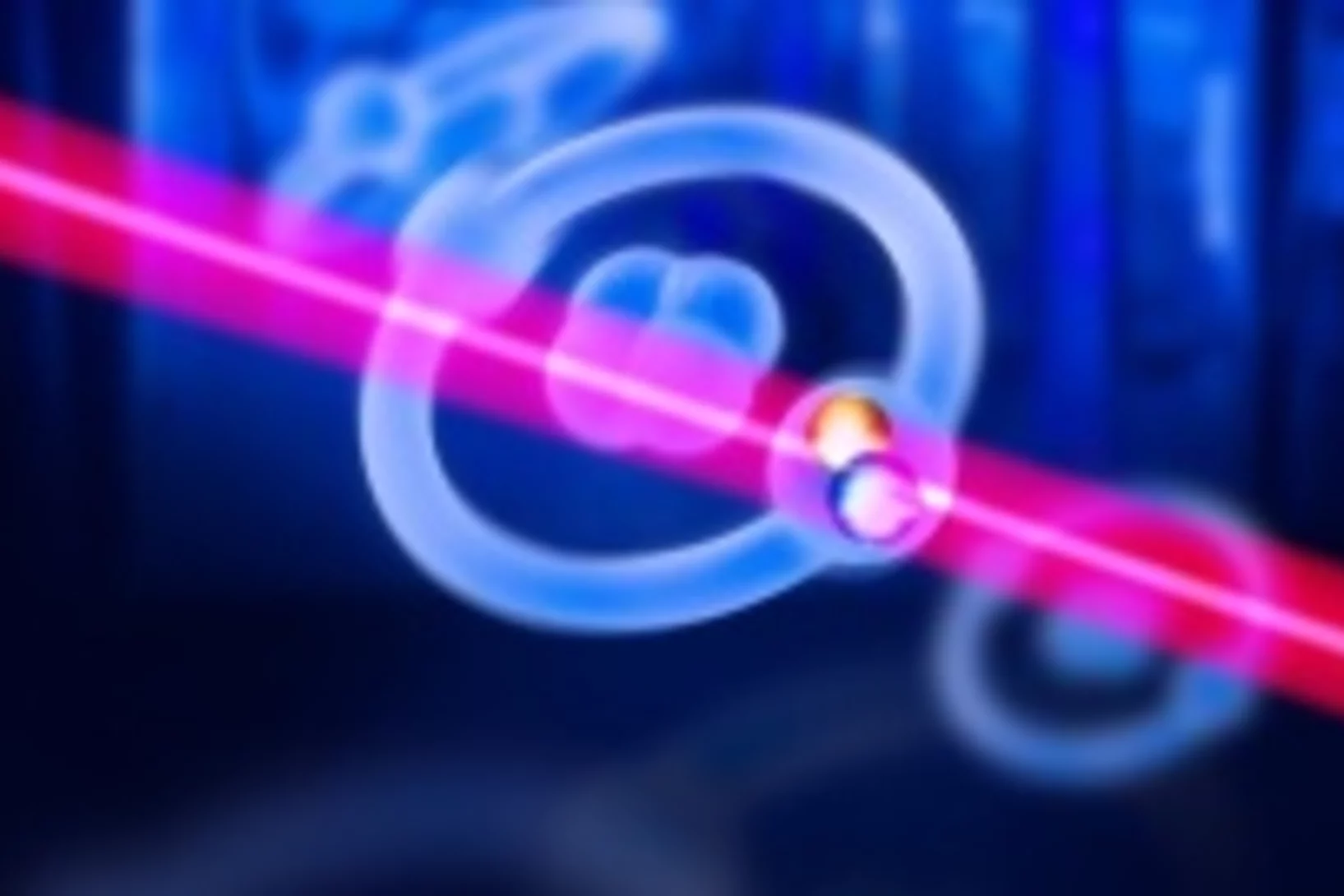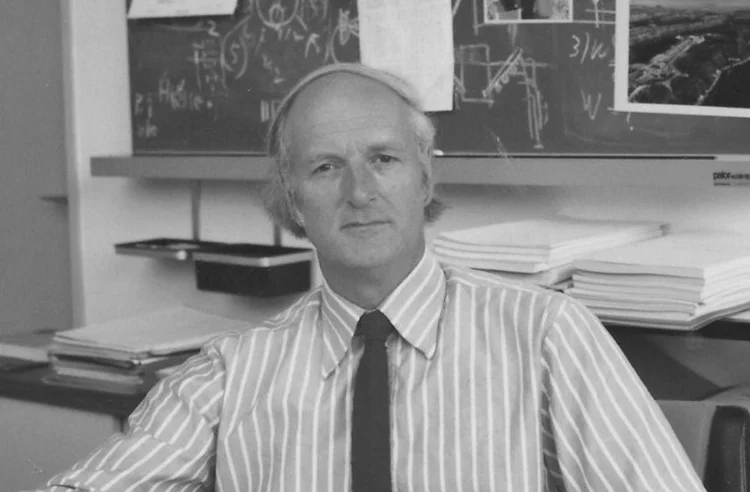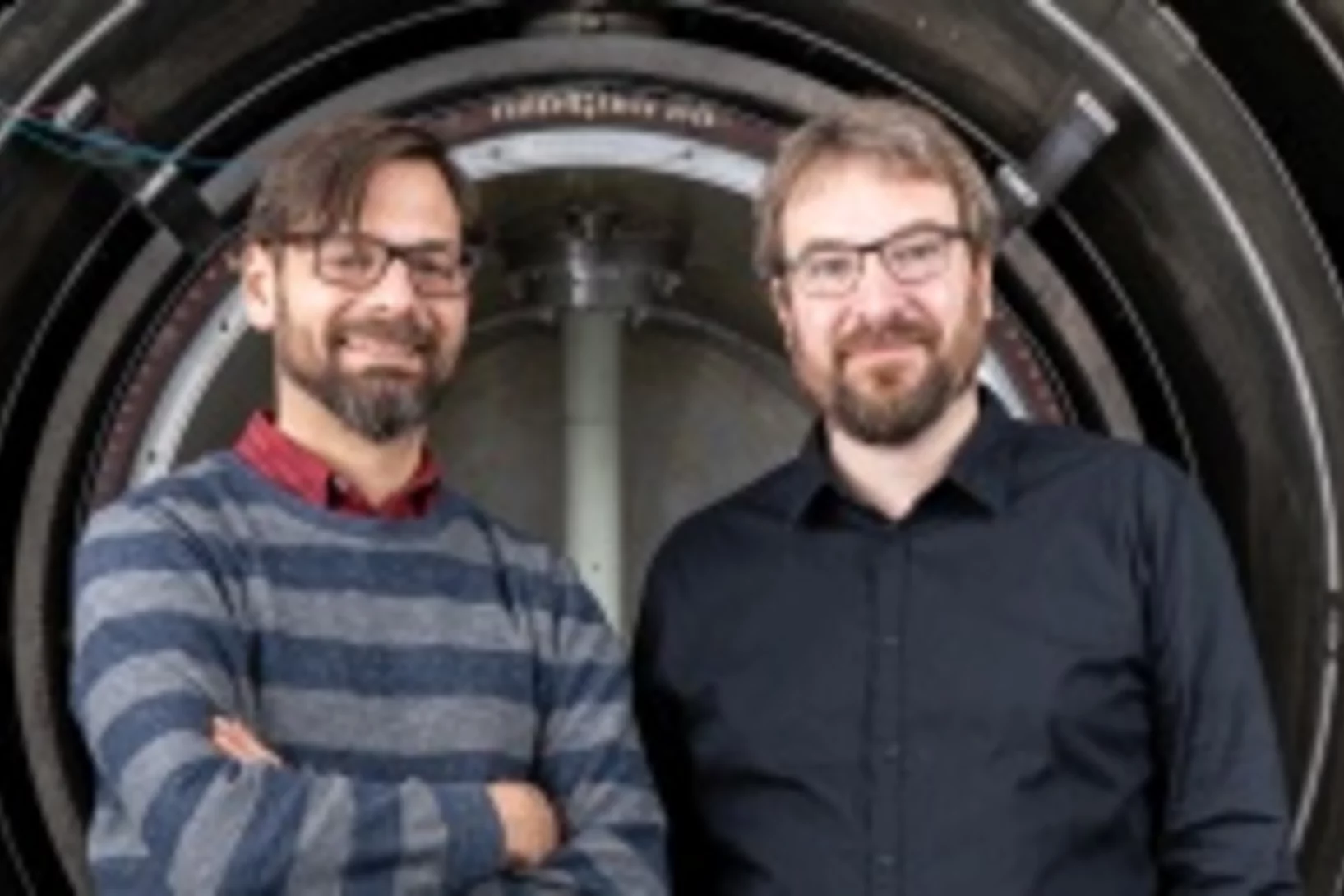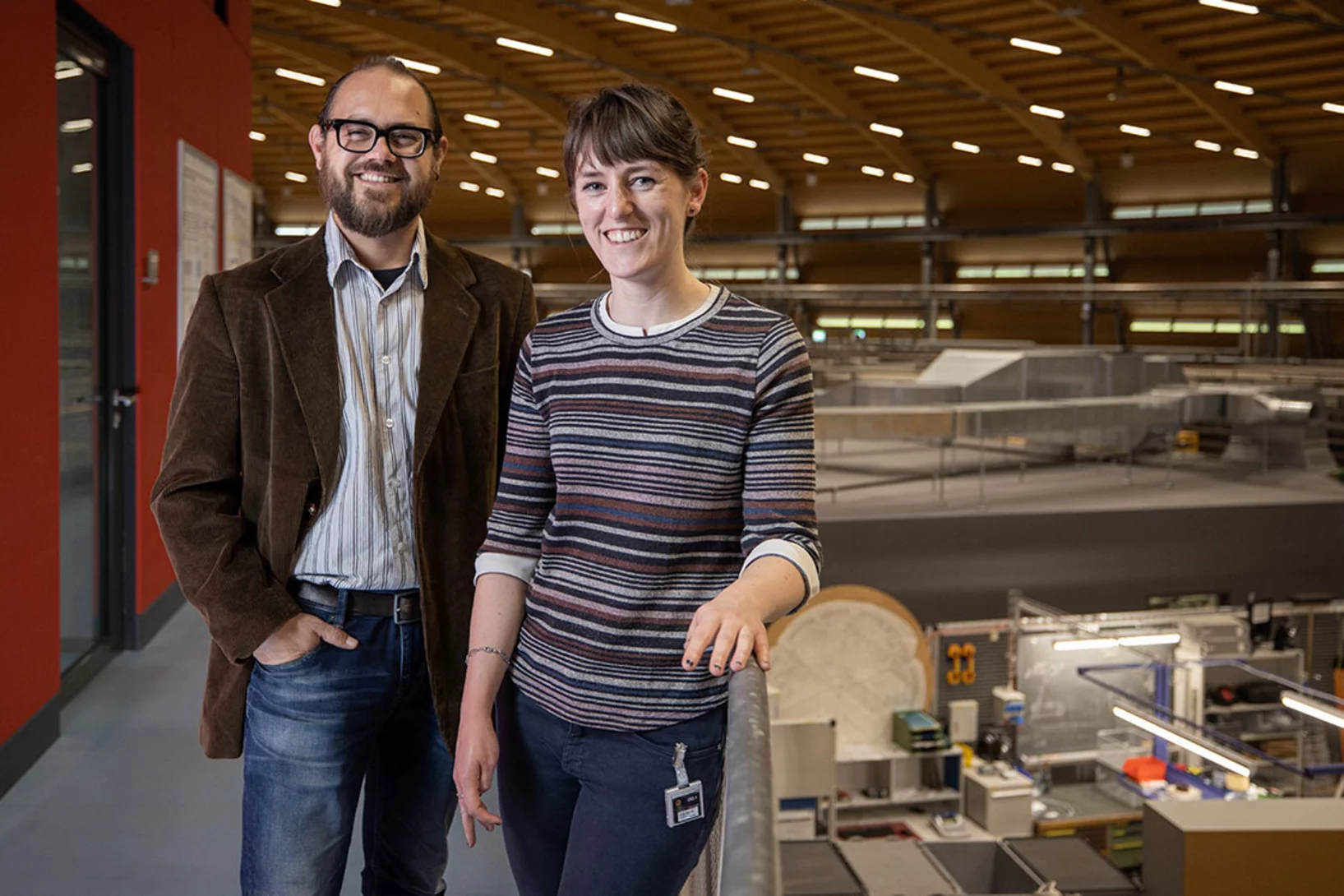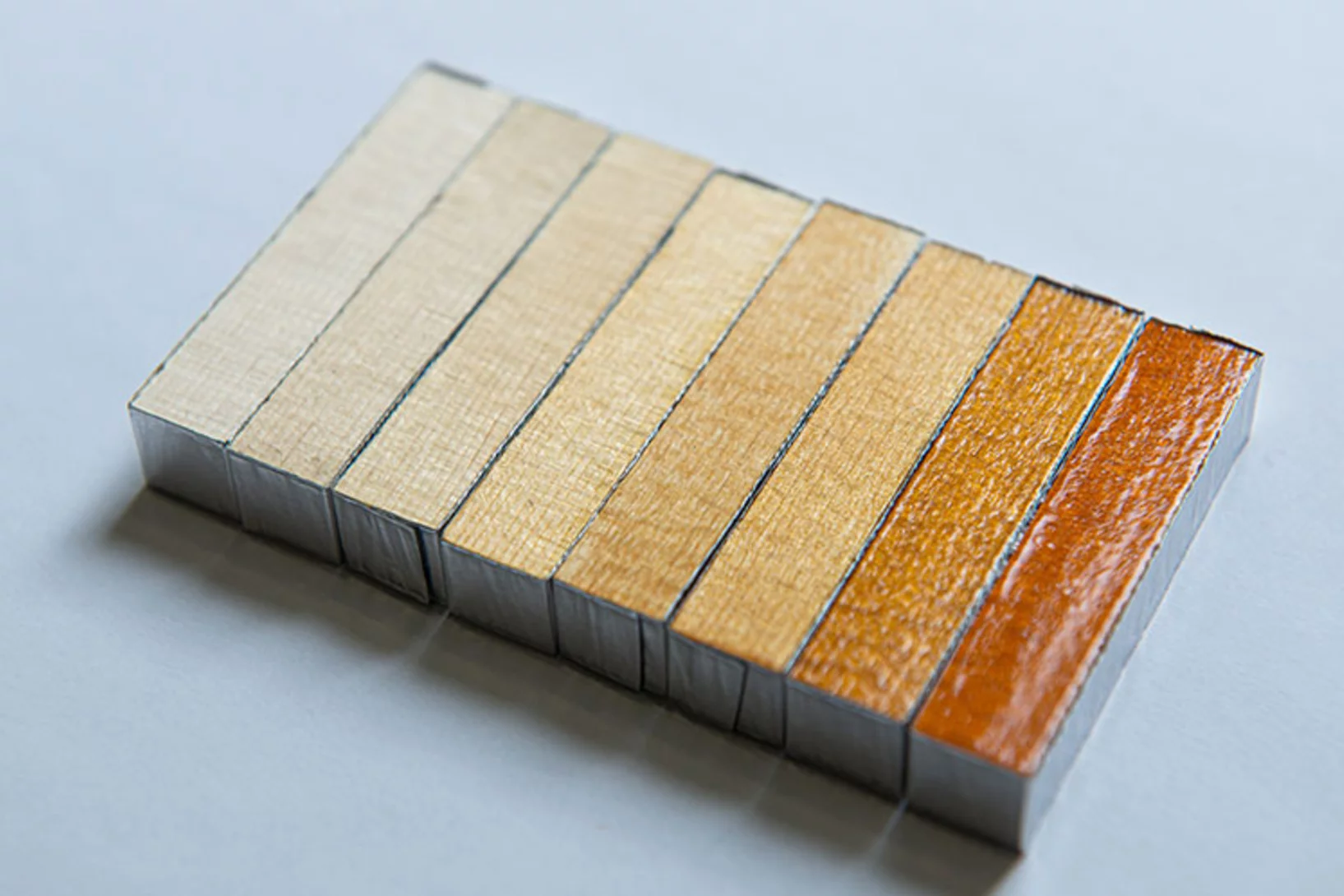Here you find current and previous news from the PSI Center for Neutron and Muon Sciences.
Show filters
Das Bindeglied zwischen Theorie und Experiment
Ohne fundamentale Konstanten gibt es keine Physik.
Silver medal at the EuroSkills
Silver medal for Mario Liechti at the EuroSkills in Graz, Austria.
CHRISP — All the key results in one place
A specialSciPost volume, entitled “Review of Particle Physics at PSI”, has recently been completed.
SINQ - performance of the new neutron guide system
In a recent open access article in "Neutron News" the performance of the new neutron delivery system after the SINQ upgrade has been described. Neutron flux gain factors between 2 and more than 10 have been measured at the various cold neutron instruments at SINQ.....
First Components of ESTIA arrive at ESS
The European Spallation Source (ESS) is currently under construction in Lund, Sweden and is set to become the most powerful neutron source in Europe and world-wide. The PSI-ESS project is delivering state-of-the-art contributions to five instruments at ESS, which will be home to a suite of 15 novel instruments. Among the five PSI instruments, the reflectometer ESTIA stands out as it is delivered in its entirety by PSI ...
Magnetische Nanowelt
Am PSI stossen Forschende auf exotische Phänomene wie frustrierte Magnete und Nanowirbel, mit denen vielleicht dereinst Daten besser gespeichert werden können.
Was Wasser mit Quantenmagneten gemein hat
Bei hohem Druck verschmelzen flüssiges Wasser und Wasserdampf – die Phasengrenze verschwindet. Forschende haben jetzt ein ähnliches Verhalten in einem Quantenmagneten entdeckt.
Hercules School 2021 at PSI
During the week of March 15 – 19, we had the pleasure to welcome 20 international PhD students, PostDocs and assistant professors at PSI, taking part in the first virtual Hercules School on Neutrons & Synchrotron Radiation.
Die Schweizer Forschungsinfrastruktur für Teilchenphysik CHRISP
Forschende suchen nach Abweichungen im gängigen Standardmodell der Physik und wollen herausfinden, wie unser Universum aufgebaut ist.
Grösse des Heliumkerns genauer gemessen als je zuvor
In Experimenten am Paul Scherrer Institut PSI hat eine internationale Forschungszusammenarbeit den Radius des Atomkerns von Helium fünfmal präziser gemessen als jemals zuvor. Mithilfe des neuen Werts lassen sich fundamentale physikalische Theorien testen.
Magnetisch abgeschirmt vom Rest der Welt
Am Paul Scherrer Institut PSI haben Forschende gemeinsam mit einer Firma einen Raum konstruiert, der einer der am besten magnetisch abgeschirmten Orte auf der Erde ist. Mit seiner Hilfe wollen sie einige der letzten Rätsel der Materie lösen und der Antwort auf eine fundamentale Frage näher kommen: Warum gibt es überhaupt Materie und damit auch uns selbst?
A new small angle neutron scattering instrument arrives at SINQ from LLB
In 2018 an agreement between the Laboratoire Léon Brillouin (LLB) and Paul Scherrer Institut has been signed with the aim to jointly operate a new small angle neutron scattering (SANS) instrument at the Swiss spallation neutron source SINQ.
Marc Janoschek appointed Associate Professor ad personam at University of Zurich
Marc Janoschek, the head of the Laboratory for Neutron and Muon Instrumentation (LIN), was appointed as Associate Professor ad personam for experimental physics – correlated quantum materials at the University of Zurich starting February 1, 2021.
FALCON - a new instrument project at SINQ
Early 2020, an agreement between the Helmholtz-Zentrum Berlin and Paul Scherrer Institut has been signed, according to which the recently commissioned Laue Diffractometer Falcon (E11) would be transferred from HZB to PSI. The purpose of this agreement was to make state-of-the-art equipment from the recently closed research reactor BER-II at HZB work for scientific community at SINQ.
Prestigious IEEE award for Stefan Ritt
Stefan Ritt, leader of the Muon Physics group at the Laboratory for Particle Physics, has received today the prestigious IEEE Emilio Gatti Radiation Instrumentation Technical Achievement Award, for "contributions to the development and democratization of ultra-high-speed digitizers”.
On the winners’ podium at the SwissSkills professional championships
With Mario Liechti (gold) and Melvin Deubelbeiss (bronze) two of our electronics apprentices achieved a place on the winners’ podium at the SwissSkills 2020. The SwissSkills are the Swiss professional championships organized by the leading industry associations. The final competition took place October 27 - 30, 2020 at Schindler Elevators in Ebikon.
Swiss National Science Foundation Ambizione grant for Franziska Hagelstein
Franziska Hagelstein has been awarded a Swiss National Science Foundation Ambizione grant with PSI as host institution. She joined the particle theory group (NUM, Laboratory of Particle Physics LTP) in October 2020. In the near future she will be accompanied by a PhD student.
Nanowirbel mit besonderer Eigenschaft
Forschende am Paul Scherrer Institut PSI haben besondere Nano-Wirbel in einem Material zum ersten Mal nachgewiesen: sogenannte antiferromagnetische Skyrmionen.
Mu3e magnet arrived at PSI
After almost three years of planning, design and construction, the 31-ton, 2.6 Tesla superconducting magnet for the Mu3e experiment arrived today at PSI. The magnet delivery is an important milestone in the Mu3e experiment at the Laboratory of Particle Physics LTP, which will search for New Physics in muon decays over the next years.
Auf der Suche nach einer neuen Physik
Mit dem Hochintensitäts-Protonenbeschleuniger HIPA erzeugt das Paul Scherrer Institut Elementarteilchen, um zu klären, wie das Universum aufgebaut ist. Mithilfe von Pionen, Myonen und Neutronen führen die Forschenden Experimente durch, um das Standardmodell der Elementarteilchenphysik zu überprüfen.
Anna Sótér appointed Tenure Track Assistant Professor at ETH Zurich
Anna Sótér, currently Lecturer and SNSF Ambizione Fellow at ETH Zurich, formerly member of the PSI Laboratory for Particle Physics and member of the PSI Fellow program, has been appointed Tenure Track Assistant Professor of Low Energy Particle Physics. Anna Sótér’s research is in the area of exotic atoms, where particle physics, atomic physics and quantum optics meet.
LENS Webinar on New Directions in Instrumentation
On June 25 the League of Advanced European Neutron Source LENS organized a second webinar on "New Directions in Instrumentation". Artur Glavic (LIN) gave a presentation on "Neutrons for Magnetic Nanostructures on Surfaces: Beyond the Specular Intensity Wars", which is still available online.
Young Scientist Award 2020
The Young Scientist Award 2020 of the European Magnetism Association (EMA) goes to Claire Donnelly for advances in the experimental characterization of spin textures and their dynamics in three dimensions with X-ray techniques.
Claire Donnelly, a former Ph.D. and postdoc at PSI in the Mesoscopic Systems Group, is currently a Leverhulme Early Career Research Fellow in the Cavendish Laboratory, University of Cambridge. She received her PhD in 2017 from the ETH Zurich for her work on hard X-ray tomography of three-dimensional magnetic structures based at the Paul Scherrer Institute. Following a postdoc at the ETH Zurich, she moved to the University of Cambridge and the Cavendish in January 2019, where she is focusing on the dynamics of three-dimensional magnetic nanostructures.
Her research focuses on three dimensional magnetic systems, which she studies using sophisticated synchorotron X-rays to determine the three-dimensional magnetic configurations, and their dynamic behaviour, at the nanoscale.
Langlebiges pionisches Helium: exotische Materie erstmals experimentell nachgewiesen
Exotische Atome, in denen Elektronen durch andere Teilchen ersetzt werden, ermöglichen tiefe Einblicke in die Quantenwelt. Nach acht Jahren gelang einer internationalen Gruppe von Forschenden an der Pionenquelle des PSI ein schwieriges Experiment: Sie schufen ein künstliches Atom, sogenanntes «pionisches Helium».
Professor Dr. Christian Rüegg neuer Direktor des Paul Scherrer Instituts
Der neue Direktor des Paul Scherrer Instituts tritt heute sein Amt an: Christian Rüegg will die Spitzenstellung der Grossforschungsanlagen des PSI weiter ausbauen und so den Forschungsstandort Schweiz stärken.
Symposium in memory of Jean-Pierre Blaser
Jean-Pierre Blaser (1923-2019) was one of the founders of the Swiss Institute for Nuclear Research SIN - one of the two institutions, which merged to the Paul Scherrer Institut in 1988. From 1988-1990 he was the first Director of the Paul Scherrer Institut. On the occasion of his first obit ETH Zurich and PSI organised a symposium to honour the lifetime achievement of this outstanding Swiss physicist.
Dem Rätsel der Materie auf der Spur
Forschende haben an der Quelle für ultrakalte Neutronen des PSI eine Eigenschaft des Neutrons so genau wie noch nie vermessen: sein elektrisches Dipolmoment. Denn bis heute wird nach einer Erklärung gesucht, weshalb es nach dem Urknall mehr Materie als Antimaterie gab.
Kurzfilm eines magnetischen Nanowirbels
Mit einer neu entwickelten Untersuchungsmethode konnten Forschende die magnetische Struktur im Inneren eines Materials mit Nanometer-Auflösung abbilden. Ihnen gelang ein kurzer «Film» aus sieben Bildern, der erstmalig in 3-D zeigt, wie sich winzige Wirbel der Magnetisierung tief im Inneren eines Materials verändern.
Anna Sótér starts Ambizione fellowship
Anna Sótér has started an Ambizione fellowship at ETH Zurich and PSI. Her project is dedicated to developing a novel source of cold muonium atoms, which will be used for a new interferometry experiment that enables testing the weak equivalence principle by directly probing gravitational interaction of antimatter.
Gut lackierte Geigen spielen länger
Traditionell werden Geigen lackiert, um sie vor Luftfeuchtigkeit und anderen Umwelteinflüssen zu schützen. Ein Wissenschaftler-Team hat am PSI untersucht, welchen Einfluss unterschiedliche Anstriche auf das Instrument haben. Tatsächlich sollte man auf den Lack keinesfalls komplett verzichten.


